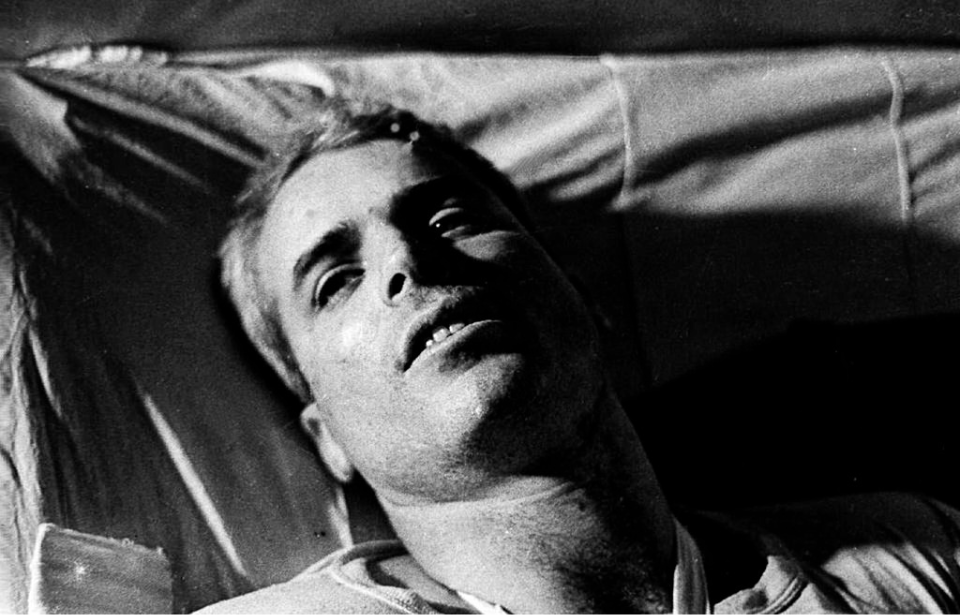During the years he served in the US Senate, John McCain was known for being a maverick. He earned this reputation by sticking to his guns and making friends with those many would consider foes. It took a certain amount of gusto to operate in this fashion. That was no problem for McCain, who’d proven his mettle and strength as a prisoner of war (POW) during the Vietnam War.
John McCain’s early life
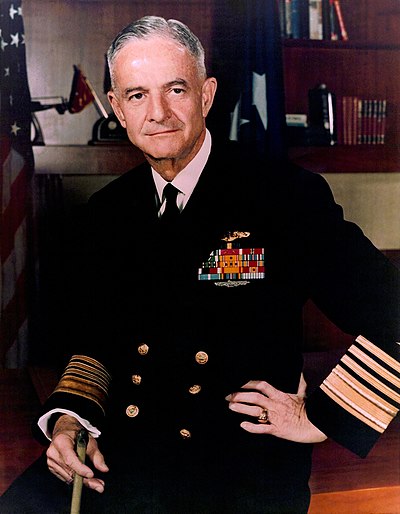
John Sidney McCain III was born on August 29, 1936, at Coco Solo Naval Air Station, Panama Canal Zone. His father was an admiral in the US Navy and his profession saw the family move around a lot during the younger McCain’s childhood, with him attending nearly 20 different schools. His father’s service also meant he disappeared for long periods following the Japanese attack on Pearl Harbor in December 1941, which launched the United States into the Second World War.
To supplement his education, his mother, Roberta, made sure to expose him to several historical sites during their travels, and it wasn’t until 1951 that the family finally settled in Virginia, with McCain becoming a student at Episcopal High School, a private boarding school in Alexandria. While there, he cultivated a tough guy persona, excelling at football and wrestling and exhibiting a combative disposition.
While not the best student, achieving an “undistinguished, but acceptable” academic record, McCain graduated in 1954, with his next stop being the US Naval Academy in Annapolis, Maryland.
Embracing his military roots
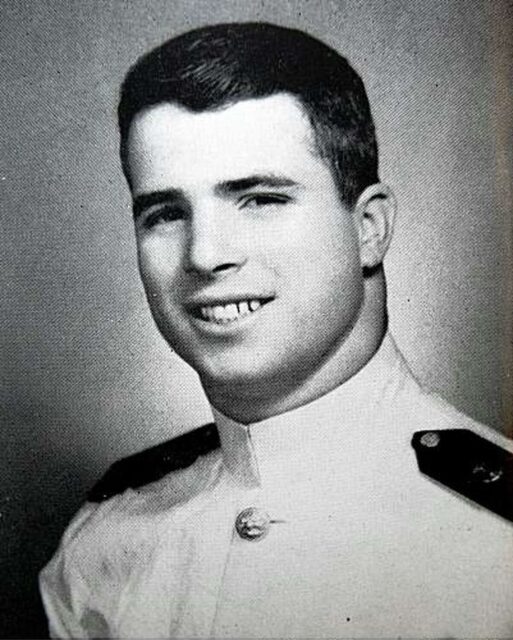
John McCain was from a family entrenched in the US military. His ancestors had fought in several major conflicts in American history, including the Indian Wars, the Revolutionary War and the War of 1812. They also fought for the Confederacy during the American Civil War and in World War I.
As aforementioned, Jack McCain was an admiral in the US Navy, and he and his father, John Sidney “Slew” McCain, Sr., became the first father-son duo to achieve the rank of four-star admiral. Given this, it’s no surprise the younger McCain was destined to also enlist in the service.
During his time at the US Naval Academy, McCain didn’t distinguish himself academically, but he was well-regarded by his classmates. He had a contentious relationship with his superiors, collecting “demerits the way some people collect stamps.”
When he graduated in 1958, he was ranked 894th out of his class of 899 students.
After receiving his commission as an ensign, McCain was assigned to Naval Air Station Pensacola, where he spent over two years training to become a naval aviator. He was known as a hard partier who may not have been focused enough, as well as a subpar pilot – he even crashed his Douglas AD-6 Skyraider while stationed at Naval Air Station Corpus Christi. He wasn’t assigned to the elite fighter aircraft units and, instead, piloted the A-1 and was assigned to ground-attack units.
Entering active service with the US Navy
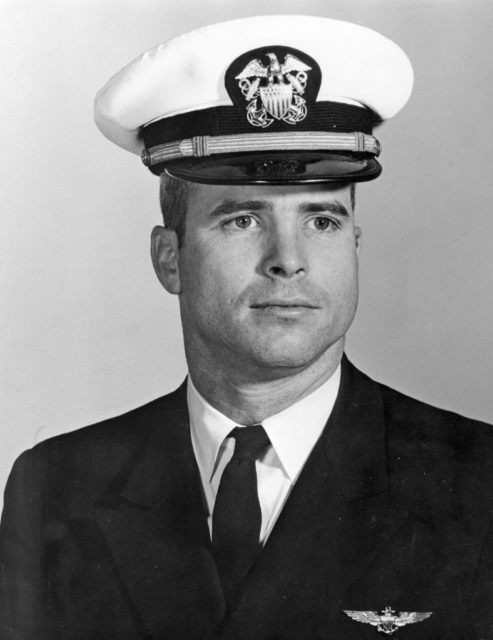
In November 1960, John McCain was assigned to Attack Squadron 65 (VA-65), better known as “The World Famous Fighting Tigers.” Serving aboard the USS Enterprise (CV-65) and Intrepid (CV-11), he was deployed across the Mediterranean and Caribbean, with the experience allowing him to improve his piloting skills. He followed this up with an assignment as a flight instructor at Naval Air Station Meridian.
While establishing a life for himself – he married Carol Shepp in 1965 and appeared on an episode of Jeopardy! (1964-75) the same year – McCain continued his service with the US Navy. He found himself wanting to do more for his country, and with the United States fighting the war in Vietnam, he requested a combat assignment in 1966.
1967 USS Forrestal (CV-59) Disaster
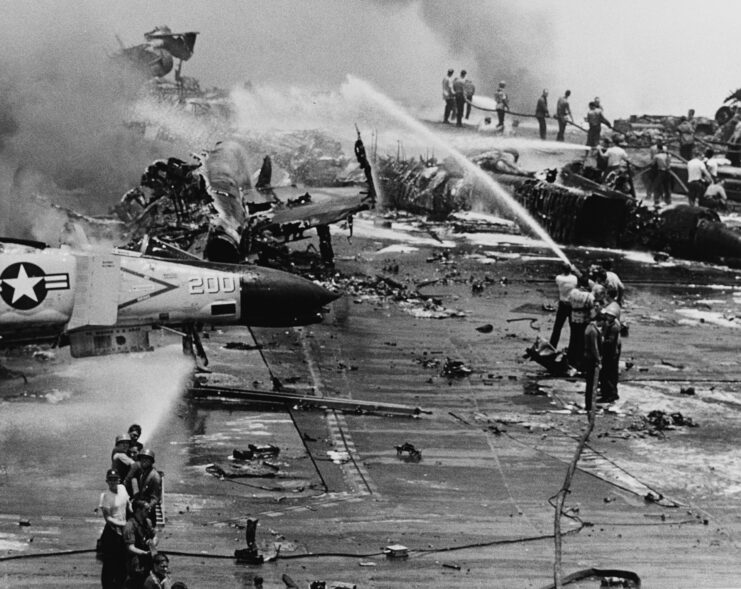
John McCain was assigned to the USS Forrestal (CV-59), from which he flew Douglas A-4E Skyhawks with Attack Squadron 46 (VA-46) as part of Operation Rolling Thunder. Just a few months after the aircraft carrier arrived in the Gulf of Tonkin, he was involved in the 1967 Forrestal Disaster, which very nearly ended his life.
The incident occurred on July 29, 1967, when an electrical surge in one of the McDonnell Douglas F-4B Phantom IIs onboard the vessel caused an Mk 32 “Zuni” Five-Inch Folding-Fin Aircraft Rocket (FFAR) to accidentally launch right into McCain’s A-4E. While he was able to escape, his aircraft’s external fuel tank was dislodged, sparking a fire. In the ensuing chaos, a bomb went off, forcing shrapnel into McCain’s legs and chest.
Hundreds aboard Forrestal were injured in the incident, while 134 sailors lost their lives. Due to issues with the way the US Navy trained crewmen to handle firefighting situations, it took longer than it should have for the subsequent blaze to be extinguished, and the casualty total led to major changes regarding how the service trains recruits.
John McCain’s aircraft was shot down over Hanoi
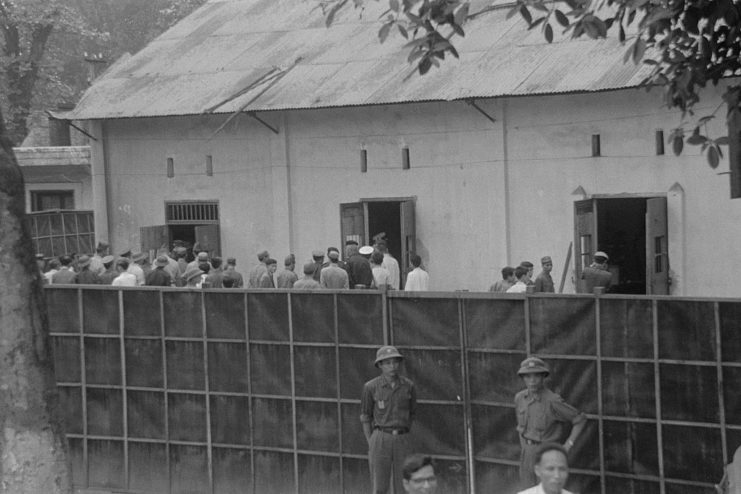
With the USS Forrestal damaged, John McCain requested a different assignment and was transferred to Attack Squadron 163 (VA-163) aboard the USS Oriskany (CV-34). Upon joining the aircraft carrier’s crew, he began volunteering to fly in some of the squadron’s most dangerous missions, including a raid over Phúc Yên Air Base, during which he destroyed one aircraft and damaged another two.
On October 26, 1967, McCain embarked on his 23rd mission, a strike against the Yen Phu thermal power plant in Hanoi. During the mission, his A-4E was noted on the enemy’s radar and downed by a Soviet-manufactured SA-2 anti-aircraft missile. While he was able to eject from the cockpit before the aircraft hit the ground, the force of the ejection fractured his left arm, his right leg and his right arm in three different places. It also knocked him unconscious.
After being rescued from Trúc Bạch Lake, McCain was bayoneted and hit with rifle butts by the North Vietnamese. He was then taken to the infamous Hỏa Lò Prison, known as the “Hanoi Hilton” among those imprisoned there. Despite his injuries, he was denied medical care while being interrogated. Eventually, the North Vietnamese learned he was the son of an important US naval official and sent him to a hospital, where the interrogations and beatings continued. He spent a total of six weeks recuperating.
Imprisoned for over five years
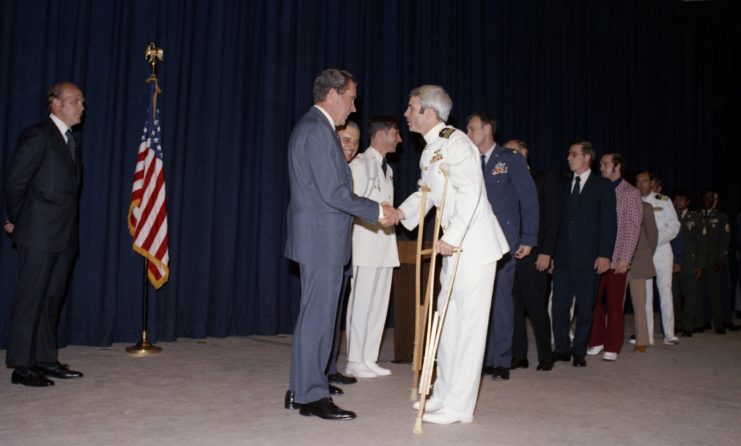
After his time in hospital, John McCain was sent to a prisoner of war (POW) camp outside of Hanoi, known as “the Plantation.” There, he was imprisoned with other American servicemen, including George “Bud” Day. A few months later, he was placed in solitary confinement, where he remained for the next two years.
Jack McCain eventually became Commander-in-Chief, Pacific Command (CINCPAC) and was named commander of the US forces in Vietnam. The North Vietnamese looked to release his son and use it for propaganda purposes. The younger McCain, however, refused to be released until all of the servicemen imprisoned before him were freed.
Remaining at the POW camp, McCain was tortured on a regular basis, eventually becoming sick with dysentery. While conditions improved somewhat in 1969, following the death of North Vietnamese leader Hồ Chí Minh, the naval aviator still had years to go.
After several moves, McCain wound up back at Hỏa Lò Prison, where he remained until the start of Operation Homecoming, which saw the return of American POWs following the signing of the Paris Peace Accords. He was released, along with others, on March 14, 1973.
Overall, he’d been a captive of the North Vietnamese for five and half years. For his actions as a POW, he was awarded several honors, including the Purple Heart, three Bronze Stars and the Legion of Merit. He later stated that his time away from the United States made him appreciate his country even more, saying, “It wasn’t until I had lost America for a time that I realized how much I loved her.”
Recounting his experiences as a prisoner of war (POW)
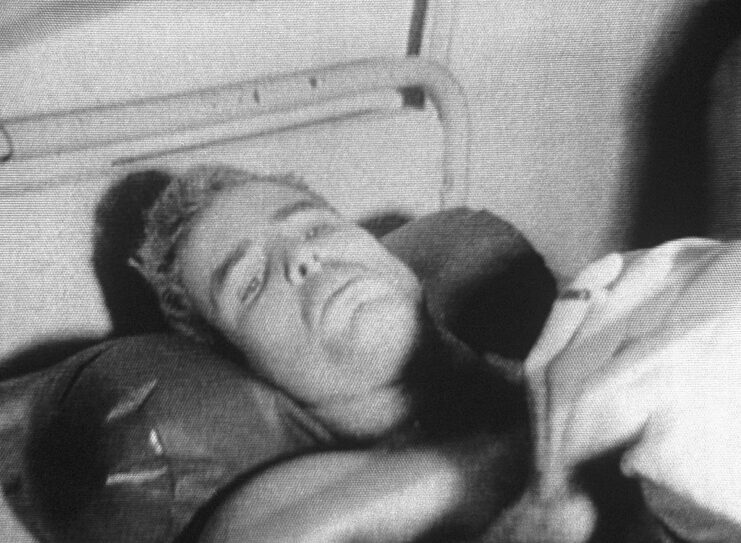
In his 2000 memoir, Faith Of My Fathers, John McCain recounted his time as a prisoner of war in Vietnam. His words provide readers with a firsthand account of what life was like for those held captive by the enemy and show how close he came to death.
Before being sent for medical treatment, McCain remembered, “For four days, I was taken back and forth to different rooms. Unable to use my arms, I was fed twice a day by a guard. I vomited after the meals, unable to hold down anything but a little tea. I remember being desperately thirsty all the time, but I could drink only when the guard was present for my twice-daily feedings.”
Despite his condition, MCcain was steadfast in his determination to give his captors as little information about himself and his comrades as possible, writing, “I gave them the names of the Green Bay Packers’ offensive line, and said they were members of my squadron. When asked to identify future targets, I simply recited the names of a number of North Vietnamese cities that had already been bombed.”
While jarring to read, the most impactful moment of the memoir was when he recounted what happened after he was taken to the camp commander to be formally charged with his war crimes. He was severely beaten over four days and twice tried to take his own life. Mentally and physically exhausted, he confessed to the crimes he’d been accused of and was left alone in his cell for two weeks.
“They were the worst two weeks of my life,” he wrote. “I was ashamed… I shook, as if my disgrace were a fever.”
John McCain’s move into politics
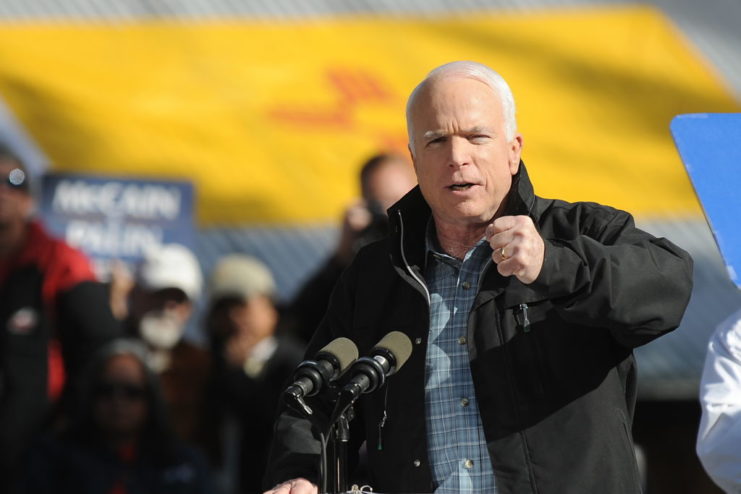
Upon his return from Vietnam, John McCain was treated as somewhat of a celebrity. He participated in several parades and was even given the key to the city of Jacksonville, Florida. He even met US President Richard Nixon during a reception for prisoners of war at the White House. That being said, he had to undergo months of physical therapy and rehabilitation.
In 1976, he became the commanding officer of a training squadron, having spent almost two years assigned to an LTV A-7 Corsair II one at Naval Air Station Cecil Field. He was then named the US Navy Liaison to the US Senate, which he credited for being his “real entry into the world of politics.” During this time, he divorced his wife and married Cindy Lou Hensley.
Realizing his injuries would likely hinder his advancement in the US Navy, McCain retired with the rank of captain in April 1981. The following year, he was elected to the US House of Representatives, serving Arizona’s 1st Congressional District. In 1986, he won his first term as a US senator, and remained in the Senate for the rest of his political career, running for president during the 2000 and ’08 elections. He lost both bids, however, to George W. Bush and Barack Obama, respectively.
McCain remains a lauded member of the Senate, known for his willingness to cross the aisle if he felt he was in the right. He also wasn’t without his fair share of controversies, including the Keating Five scandal, which saw him receive $112,000 in political contributions from the Lincoln Savings and Loan Association. As it turns out, he was one of five senators Charles Keating, Jr. had approached to stop the US government’s seizure of the company.
More from us: Wes Studi Served in Vietnam Before Becoming an Actor and Veterans Advocate
John McCain died on August 25, 2018, of an aggressive form of brain cancer. After laying in state in the Arizona State Capitol and the US Capitol, he was buried in the US Naval Academy Cemetery.
